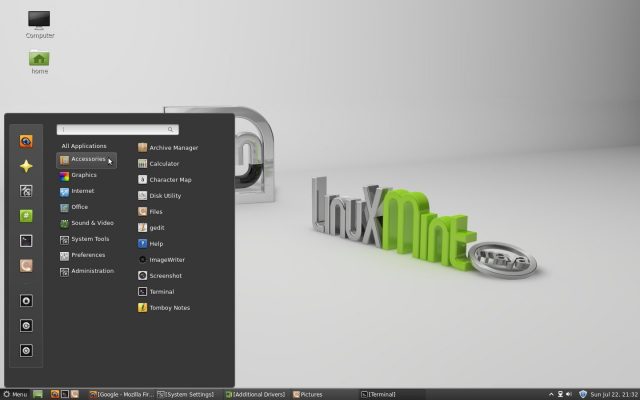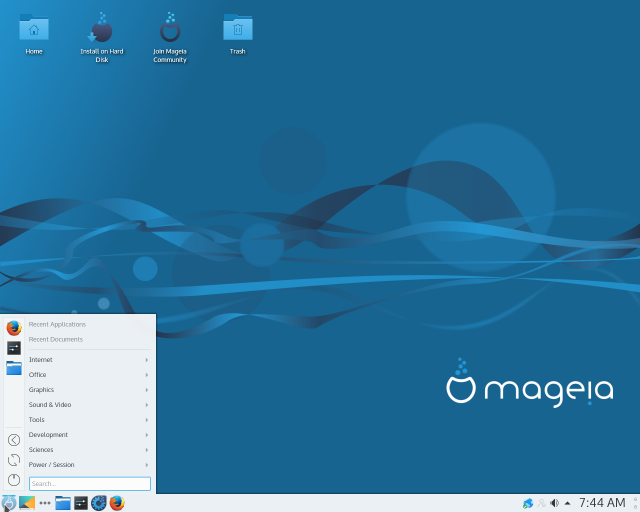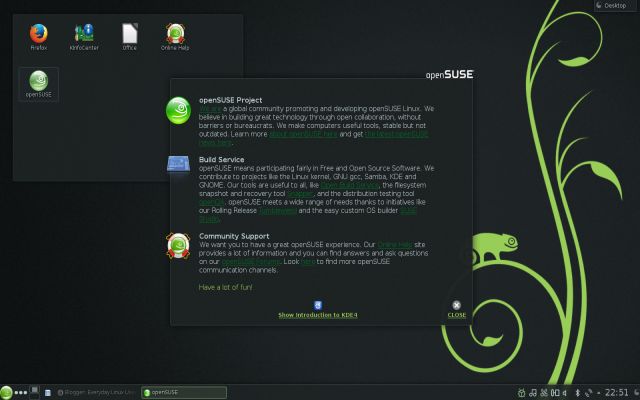The puzzling choices and the ever-increasing number of Linux distributions can be confusing for those who are new to Linux. And that’s the reason why we thought of writing this article titled Best Linux Distro for Beginners. Don’t get nostalgic but Linux can actually pose an overwhelming complexity to new users. But then, Linux is not the problem; it’s not that complex. Rather, it’s the human behavior which shows reluctance towards acceptance of new things. For me, Linux first time was an upstream swim but slowly I started enjoying it.
To be honest Linux distributions are now very easy to try. You just have to download them and use a tool to create a bootable USB drive or burn a bootable DVD. You can then restart your computer and boot from the removable media to use the Linux distribution in live mode. In live mode, the Linux distribution will run from the bootable device without interfering with your system. If you decide you want to install the Linux distro on your computer, you can do it from the live environment with the help of Best Linux Distro for Beginners.
Best Linux Distro for Beginners
- Linux Mint
- Ubuntu
- Debian GNU/Linux
- Mageia
- openSUSE
- CentOS
- PCLinuxOS
- Deepin
- Elementary OS
- Fedora
Linux Mint

Linux Mint is extremely popular. This distribution based on Ubuntu. It is elegant, graceful and provides a superior computing experience (out of the box). It is available as a free download.
- Pros: Awesome collection of minty tools, hundreds of user-friendly enhancements, inclusion of multimedia codecs, open to users’ suggestions
- Cons: They always include the latest features
- Software package management: Advanced Package Tool (APT) with mintInstall using DEB package
Ubuntu

Ubuntu is a great success as a desktop Linux distribution and has greatly contributed towards developing an easy to use OS. It is free desktop operating system that can compete well with any of the available one in the market.
- Pros: Fixed release cycle and support period, long-term support (LTS) variants with 5 years of security updates; novice-friendly; wealth of documentation
- Cons: Lacks compatibility with Debian; frequent major changes tend to drive some users away, the Unity user interface has been criticised as being more suitable for mobile devices than desktop computers; non-LTS releases come with only 9 months of security support
- Software package management: Advanced Package Tool (APT) using DEB packages
Debian GNU/Linux
Debian GNU/Linux had become the largest Linux distribution and possibly the largest collaborative software project ever created! It has a lot of applications available which range from productivity programs to business software, games and development tools. This distro comes with over 37500 packages (software that is precompiled and ready to be installed on a local machine) and all of them for free.
- Pros: Very stable; remarkable quality control; includes over 30,000 software packages; supports more processor architectures than any other Linux distribution
- Cons: Conservative, older technologies; slow release cycle; discussions on developer mailing lists and blogs can be uncultured at times
- Software package management: Advanced Package Tool (APT) using DEB packages
Mageia
Mageia probably is the latest distribution on this list, but its roots go back enough to July 1998 when Gaël Duval launched Mandrake Linux. At the time it was just a fork of Red Hat Linux with KDE as the default desktop, better hardware detection and some user-friendly features, but it gained instant popularity due to positive reviews in the media.
- Pros: Beginner-friendly; excellent central configuration utility; very good out-of-the-box support for dozens of languages; installable live media
- Cons: Lacks reputation and mindshare following its fork from Mandriva, some concern over the developers’ ability to maintain the distribution long-term on a volunteer basis
- Software package management: URPMI with Rpmdrake using RPM packages
openSUSE
openSUSE is yet another Linux-based project and distribution. It is used world widely. It is used by software developers and system administrators. Along with that, it provides user-friendly desktop and feature-rich server environment.
- Pros: Comprehensive and intuitive configuration tool; large repository of software packages, excellent website infrastructure, and printed documentation
- Cons: its resource-heavy desktop setup and graphical utilities are sometimes seen as “bloated and slow”
- Software package management: YaST graphical and command-line utility using RPM packages
CentOS
CentOS is specially designed for Red Hat Enterprise Linux. It rebuilds the source code for RHEL into an installable Linux distribution. Also it provides timely security updates for all included software packages.
- Pros: Extremely well-tested, stable and reliable; free to download and use; comes with 7+ years of free security updates;
- Cons: Latest Linux technologies are missing, security updates and new stable releases sometimes get missed
- Software package management: YUM graphical and command line utility using RPM packages
PCLinuxOS
PCLinuxOS was introduced in 2003 by Bill Reynolds. It is also called as “Texstar”. The project offers amazing support for many technologies especially to user who have migrated from Windows to Linux.
- Pros: Out-of-the-box support for graphics drivers, browser plugins and media codecs; rolling-release update mechanism; up-to-date software
- Cons: no out-of-the-box support for non-English languages; lacks release planning and security advisories
- Software package management: Advanced Package Tool (APT) using RPM packages
Deepin
Deepin is an elegant, user-friendly and reliable operating system. It is Debian-based distro. It has the best the open source world has to offer. Also it has created its own desktop environment called Deepin Desktop Environment. Deepin aims it prior attention towards intuitive design. It has the best user interface.
Elementary OS
Elementary OS is unquestionably stable OS. It is an Ubuntu-based operating system. It features the Pantheon desktop environment. As soon as you start using it you can easily notice the similarity to MacOS desktop. For this reason, it is advisable for MacOS users to switch to this distro of Linux for their own ease.
Fedora
The last name under the Best Linux Distro for Beginners list is Fedora. It has a few philosophical differences from Ubuntu, Mint, and many other distributions. Unlike the others, Fedora is passionate about only including open source software.
- Pros: Highly innovative; outstanding security features; large number of supported packages; strict adherence to the free software philosophy; availability of live CDs featuring many popular desktop environments
- Cons: Fedora’s priorities tend to lean towards enterprise features, rather than desktop usability; some bleeding edge features, such as early switch to KDE 4 and GNOME 3, occasionally alienate some desktop users
- Software package management: YUM graphical and command line utility using RPM packages
10 Best Linux Distribution for Beginners
Here is the list of Free and Best Linux Distro for Beginners in 2018.
- Ubuntu
- Linux Mint
- PCLinuxOS
- Debian
- Mageia
- OpenSUSE
- CentOS
- Fedora
- Elementary OS
- Deepin
Here we have listed 3 Best Linux Distro for Beginners. These 3 are considered the easiest for new users who want to get productive in Linux as soon as possible without having to master all its complexities. So you can opt any of these Linux Distro and start a whole new experience with your computers or laptops.









